Each owner of a private house seeks his household territory to look bright, beautiful and original. For this, flower flower beds are equipped, living hedges in the garden are being built, various comfortable recreation areas and others are built. One of the most original plants that can decorate the country area, a mild cuff is considered. This culture belongs to a number of decorative. However, at the same time it is not at all demanding and is well taken out in the conditions of our climate. Read more about the characteristics of this plant and the methodology of its cultivation, we will describe further in the article.
Mild cuff - culture characteristics
The mild cuff (Alchemillamollis) refers to the long-term cultures of the family of rustic. The plant received its name from two words "Alchemilla", which means "alchemy" and "Mollis". And it is not surprising, after all, even ancient scientists have been seen by the ability of culture to keep the dew droplets on the surface of their leaves. It caused them many questions, as usually water should be drained. Such properties of the plant were regarded as a mystical, so culture and received such a name. As for the second part of the name - "Mollis", it translates as "soft edges" and characterizes the appearance of the cuff mild. And this is true, because the leaflets of culture are framed by fluffy lace, giving the plant original appearance. Therefore, the flower products prefer to use a cuff soft to decorate the flower bed.
The distinctive characteristics of the culture are as follows:
- The mild cuff has a rather short root, but it is quite powerful and massive. The root system contains many branches.
- As noted above, the culture is rather unpretentious. Therefore, it can be planted both on solar pools and in a half.
- The plant is undemanding to the type of soil. The only condition so that the soil has a good drainage.
- In height, the plant reaches 45 cm. Leafs in shape resemble a fan.
- Flowering culture falls on the summer, starting from June of the month. Sometimes there is a repeated blossom of a mild cuff at the beginning of autumn.
- During the flowering period, the culture "throws out" the flowers, which in height reach 65-75 cm.
- The plant has cystic inflorescences. Flowers yellow-green shade flowers.
- Increasingly plant and care, which is only in timely feeding, watering and expanding the soil.
- There are more than 150 varieties of culture. In total, more than 300 different plants can be ranked only to the nature of the rustic.
- Most often, plant clauses can be found in North and South America, Eurasia, Russia.
Mild cuff varieties
The cuff is soft acquired its fame due to the interesting form of leaves. They are rather large, in diameter they reach more than 12 cm. In this case, the flowers of this plant are not distinguished by a large size, especially in comparison with its foliage. Inflorescences are collected in small blurred brushes. When moisture comes to the surface of the sheet, it accumulates in small drops, forming a stunning spectacle, overflowing in the sun's rays.
Despite the fact that the cuff has a large number of species in itself, the differences between the majority can only find a professional flowerflower. Of the visual distinguishable types of plants, several:
- Siberian cuff. Its name takes from the growing region. The largest habitat of this plant is the Siberian meadows. Differs in a rather massive root system. The height of some plants can reach 30 cm. The leaves of the Siberian cuff are published with the facial and invented side.
- Alpine cuff. A relatively small plant with blade sheets located in the form of peculiar bodies. In the summer, yellow-colored inflorescences appear on leaves. However, the flowers for this plant is not the most important thing. It is primarily valued for beautiful leaves.
- Hoppe cuff, very similar to Alpine, only in size it is slightly smaller.
- Red-blooded cuff. This type of plant received its name thanks to the reddish tint of the flowering and puffs of sheets. Bushes have a relatively small height, as a rule, no more than 15 cm. The plant has pretty beautiful leaves. Their color is bright green, on the front and invalid side they are decorated with the insertion of gently blue. Blooming the plant begins with the end of spring until early July. In the last days of flowering, the inflorescences acquire a reddish hue. Thanks to its beauty, a red-cooled cuff is often used in landscape design both as a border and on mixed flower beds and alpine slides.
- Cuff soft. It features large leaves of green-yellow color, and small flowers. The most common varieties of soft cuff is:
- Soft robusta cuff (Robusta). This species is fast-growing, among all other varieties, it looks like a wild plant;
- Cuff soft auslese;
- Cuff soft sealer.
Mild casing reproduction
There are several methods of breeding culture:
- Decision bush.
- Planting seeds.
The first method is quite painstaking and is used very rarely. This is due to the problems of digging the plant due to the presence of a massive and branch root system.
The procedure for breeding a culture dividing bush:
- The bush of the plants gently dig up not to damage the root system.
- Disconnect part of the bush.
- Separate two bushes on the site.
The reproduction of the plant using seeds is used very often. You can buy cuff seeds in any flower shop or assemble them on the site. A year later, they will be ready for landing. Sing the landing material in November.
Soft cuff: landing
Plant landing order:
- The first stage is important to choose the right place for planting culture. The best germination plant will show in a neutral loose soil, which contains a large amount of humus. The soil must be well drained. In addition, the cuff softly planted on loamy soil faded with organic fertilizers feels nicely. It is best to plant a culture on the solar pools, but for the absence of this, the plant shows a good survival rate and in one-day.
- After the site is selected, it should be treated with fertilizers. For this, the humus or compost is suitable.
- Next, the land should be moistened. However, keep in mind that the moisture is melted soft does not like. Therefore, moisture during watering must be made in moderate quantity.
- Since the plant during the recovery period is able to grow strongly, seedlings should be planted at a distance of 35-40 cm from each other. In addition, if planted sprouts at a short distance, they will not be able to continue to transplant to another site. This is due to the fact that the plant has a massive and branched root system.
Soft Carnish Care
The mild cuff refers to unpretentious plants. However, to improve the germination of seedlings and their flowering, there should be somewhat simple rules for the care of culture:
- The plant should be water in a timely manner. At the same time, it is impossible to allow moisture stagnation on the site.
- After the culture is wondering, you should cut inflorescences and yellow leaves.
- In order to protect the plant from winter cold, you can mulch the soil on the plot using dry foliage or peat.
- Fertilizers should be made several times per season. So, after planting seedlings, complex mineral fertilizers are added to the soil, in April, the Earth is picked up by humus.
Pests and Cuff Soft Diseases
Like most decorative plants, the mild cuff is exposed to various diseases and pests. In the main disease, this plant is amazed due to improper care:
- Mold. The most frequent disease that occurs due to improper care. Its main reason is the excessive mealing of the soil in which pathogenic mushrooms develop. Also, mold may cause heat and sunlight, causing poor soil drying. It is possible to see the cuff soft, affected by mold, can be very simple. On her sheets are visible large gray spots with a dark border. If you do not accept measures, the plant will quickly degrade and dies. The procedure for dealing with mold includes - improved soil drainage, more optimal irrigation regime, as well as soil processing and root system with antifungal drugs. Among the latest most popular is copper sulphate. To improve the soil ventilation, it is necessary to observe the minimum distance between the bushes of plants when landing it.
- Rust. It is characterized by the appearance of the plants of the plants of red or yellow-brown tint. With further aging of the leaf of the flower spots become darker. The fight against the disease is carried out with the help of preparations "Colloidal sulfur" or "oxych", which spray the surface of the leaves with an interval in two weeks.
- Septoriasis. It is characterized by the appearance on the leaves of the cuff soft rounded convex stains of dirty green. On the reverse side of the spot, the stains are slightly pressed and have a brown-green shade. Basically, the disease is manifested in the second mid-summer. Fighting with the disease must be started with the removal of infected parts of the plant, after which they are burned. The very affected plant is sprayed with burgundy liquid (1%), or an aqueous solution of the drug "HOM" at the rate of 4 g / 1 liter of water.
- Ring mosaic. It is characterized by the appearance of pale green stripes on the sheets of plants. Later, the stripes can turn yellow and merge into large spots, which subsequently leads to degradation and death of culture. The sick crucular cush must be removed from the flower beds and throw it away or burn. Seedlings with traces of the disease to plant on the flower is categorically impossible.
In addition to various diseases, pests can threaten the bushes of the cuffs, most of which are insects:
- Aphid. Small pest capable of destroying most of the plants in a short time. The danger of Tlima lies in its rapid reproduction. To combat it, carboofos drugs, "confident" or "spark" are used.
- Cute tick. Spring to the back of the leaf of the plant and sucks all the juices from it. Especially active ticks in hot summer. Fight with them with the help of "carbofos", colloidal sulfur or drug "Agrantin".
Mild cuff in landscape design
Thanks to the beauty of their spreader leaves, the cuff mild is successfully used in landscape design, mainly - to create a green background for more vivid annual plants. Excellent she will look in compositions with alpine slides to create a green base. In combination with tall plants, several plant cuffs are soft formed a peculiar soft litter, and in combination with shorts, there are a fabulous colorful carpet.
When planting plants with others, it is necessary to take into account the magnitude of its leaves, which create soil shadows. Therefore, too light-loving flowers are not desirable with them.



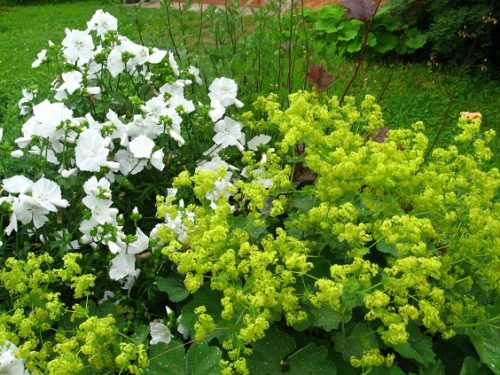
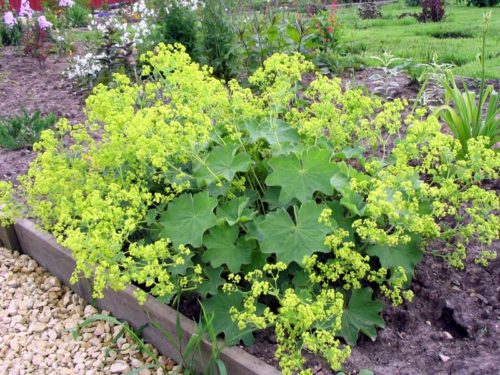
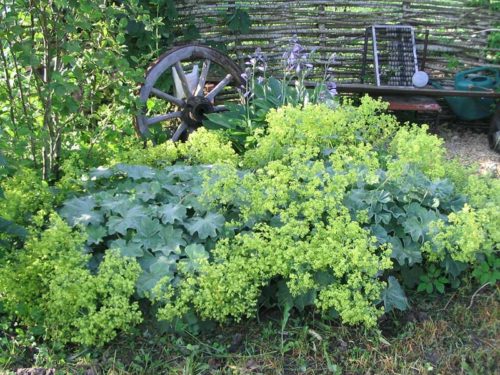


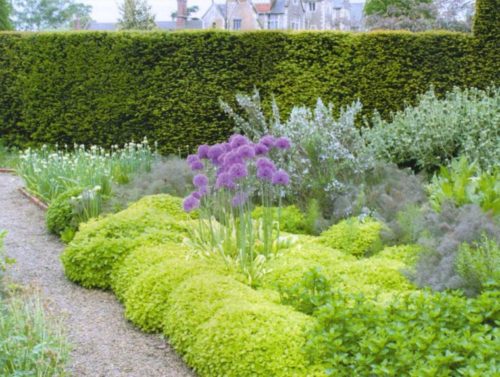
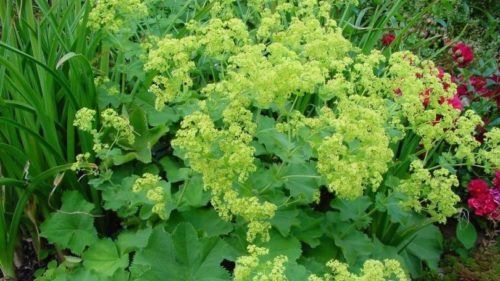
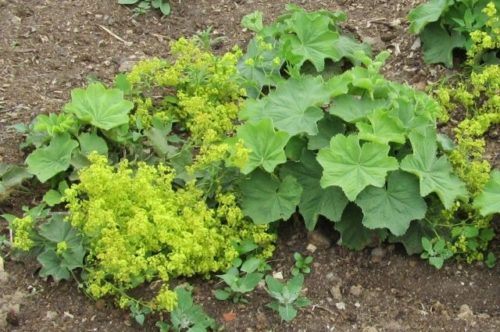
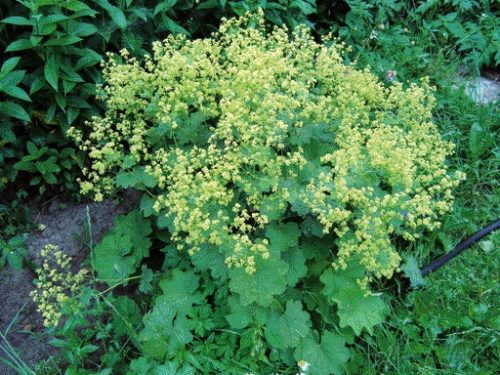
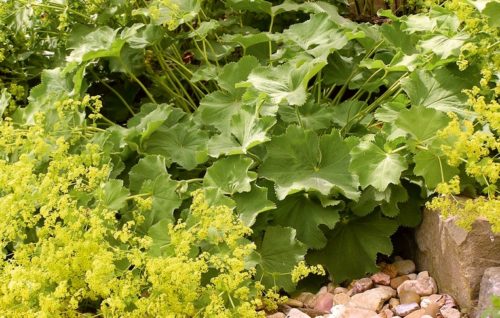
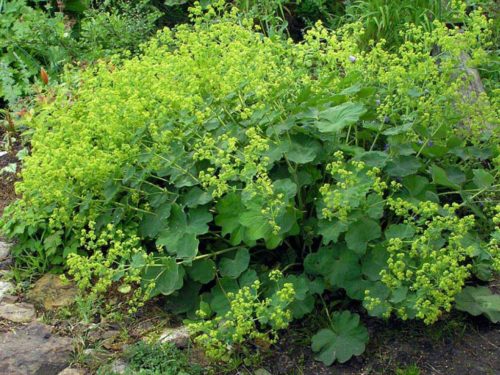












 Start a discussion ...
Start a discussion ...